Best modulation pedals 2025: our pick of the best mod effects from subtle to spectacular
Get into the captivating world of modulation pedals with these top choices from Strymon, Boss, EHX, Universal Audio, and more

From flanger to phaser and ring mod to rotary speaker, there are countless mod effects and variants available at the moment. So much so that it can be difficult to decide what you want. Many of the best modulation pedals put a whole host of sounds at your feet, allowing you to imbibe your tone with an extra dimension no matter what your style or taste.
From the swoosh and swirl of a phaser to the viscosity of a uni-vibe, modulation effects have been an integral part of guitar music ever since the DeArmond Tremolo Control arrived in 1946. The great thing about modulation is that it can be used subtly to enhance your base tone with a touch of seasoning, or you can add a healthy dollop of otherworldly resonances and totally blow your tonal tastebuds.
With so many modulation effects available, we’ve decided to round up the best of the best to make things easier for you. For those who are new to modulation, have a look at our buying advice section to learn more. If you already know your flanger from your phaser, keep scrolling to see our top picks.
Best modulation pedals: Our top picks
For pure variability and flexibility, it’s hard to look past the Strymon Mobius as the top choice. With its encyclopedic selection of sounds and incredible DSP-based emulations, the Mobius is a brilliant pedal that can replace a large portion of your pedalboard. It’s easy to use with some great presets, yet still offers a huge amount of depth for those who like to dive deep and tweak their sounds.
If you don’t have quite as much to spend, then have a look at the Electro-Harmonix Mod 11 to feed your modulation pedal needs. With its eleven core effects plus secondary functions, you’re getting a boatload of sounds for relatively little money when compared to some of the more expensive options here. Add in the compact form factor and you’ve got a great way to expand your existing arsenal.
Best modulation pedals: Product guide
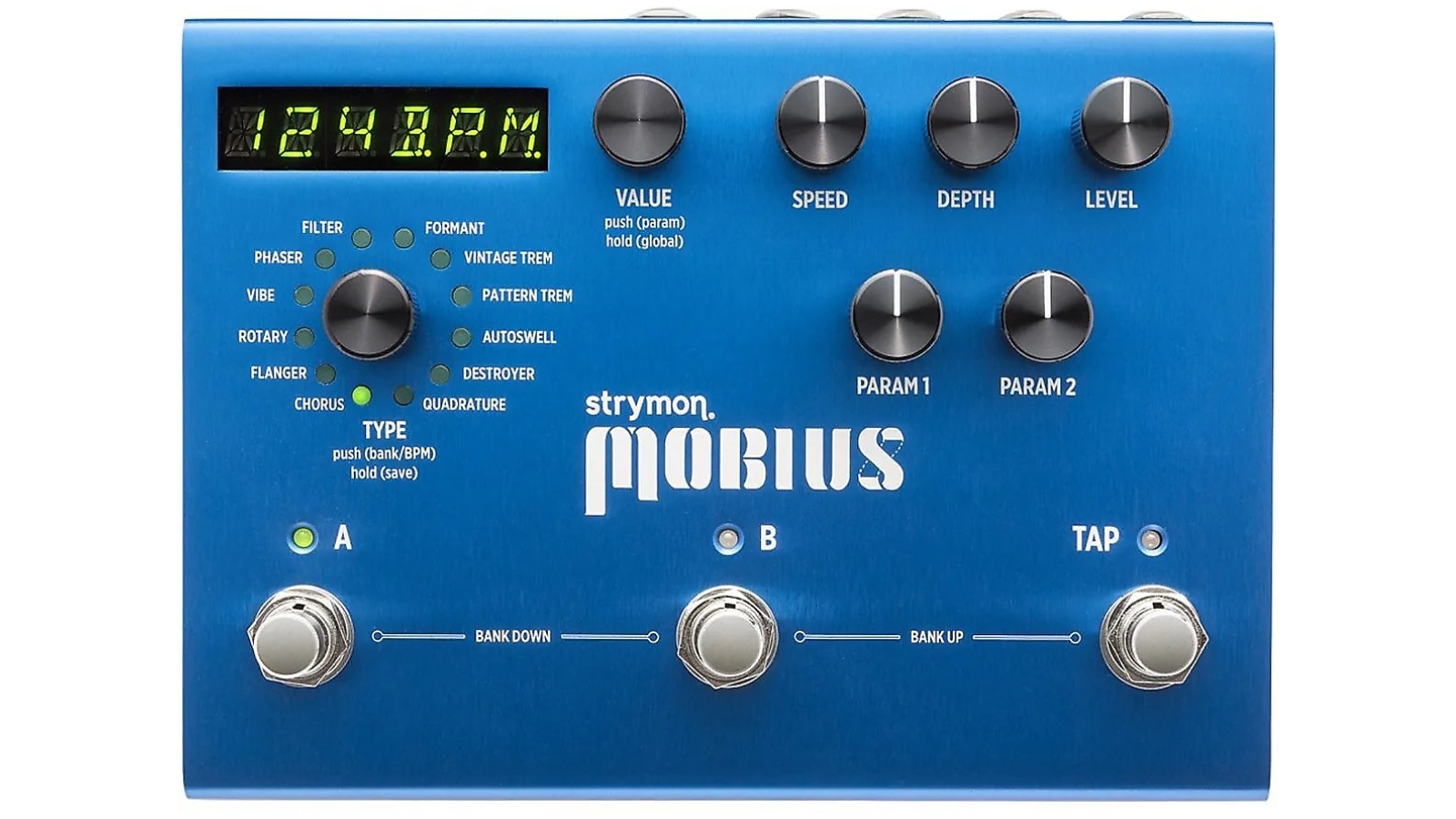
1. Strymon Mobius
Our expert review:
Specifications
Reasons to buy
Reasons to avoid
Despite being relatively old, the Strymon Mobius is still the standard when it comes to do-it-all modulation pedals. As good on your pedalboard as it is at home in the studio, the professional-grade effects of the Mobius range from vintage chorus pedal right through to modern bit-crush and everything in between.
There are a total of 12 sounds (or ‘engines’ as Strymon likes to call them) with your standards like chorus, flanger, and tremolo all present and accounted for. We really love the more esoteric sounds of the Mobius though, like the Destroyer which uses sample rate reduction and bit crushing to create some properly weird and disconcerting sounds.
There are 200 presets and we love the post/pre option which solves the age-old problem of sometimes wanting your modulation effects before or after your drive stage. It’s a rich and dynamic-sounding pedal with some glorious tones and so many options for sculpting that you’re never likely to need another mod pedal once you get this.
Read the full Strymon Mobius review
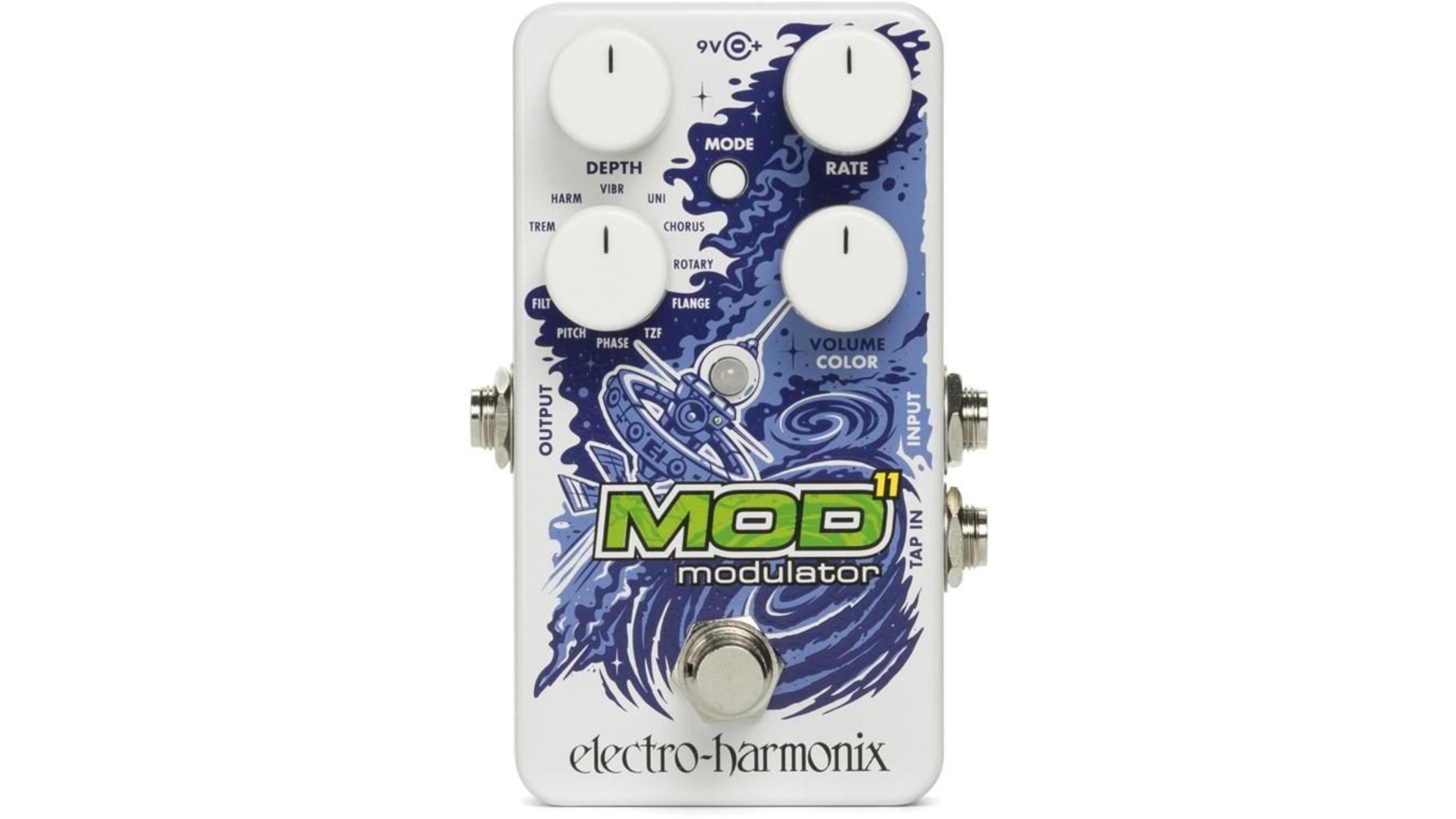
2. Electro-Harmonix Mod 11
Our expert review:
Specifications
Reasons to buy
Reasons to avoid
With the sheer amount of effects packed into the Electro-Harmonix Mod 11, it’s a wonder they’ve kept the form factor so small. It’s a clever little pedal that’s also exceptional value for money, so if the Strymons and Empresses of the guitar world are out of touch for you, this brilliant mod pedal won’t leave you out of pocket.
There are 11 total modulation effects here, but there’s a secret weapon in the form of the mode switch which essentially doubles and even triples some effects. This means you get that classic Uni-Vibe sound with both the chorus and vibrato modes that the original had. The LED turns red or orange depending on which mode you’re in, but it’s easy to get option paralysis with this much choice.
It’s weighted more towards classic modulation effects but that’s no bad thing. When matched with the dedicated depth and rate controls, the multiple modes mean you can get pretty much any sound your desire out of the EHX Mod 11. It won’t do some of the more modern esoteric sounds, but for those who want a classic mod, you can’t go wrong here.
Read the full Electro-Harmonix Mod 11 review
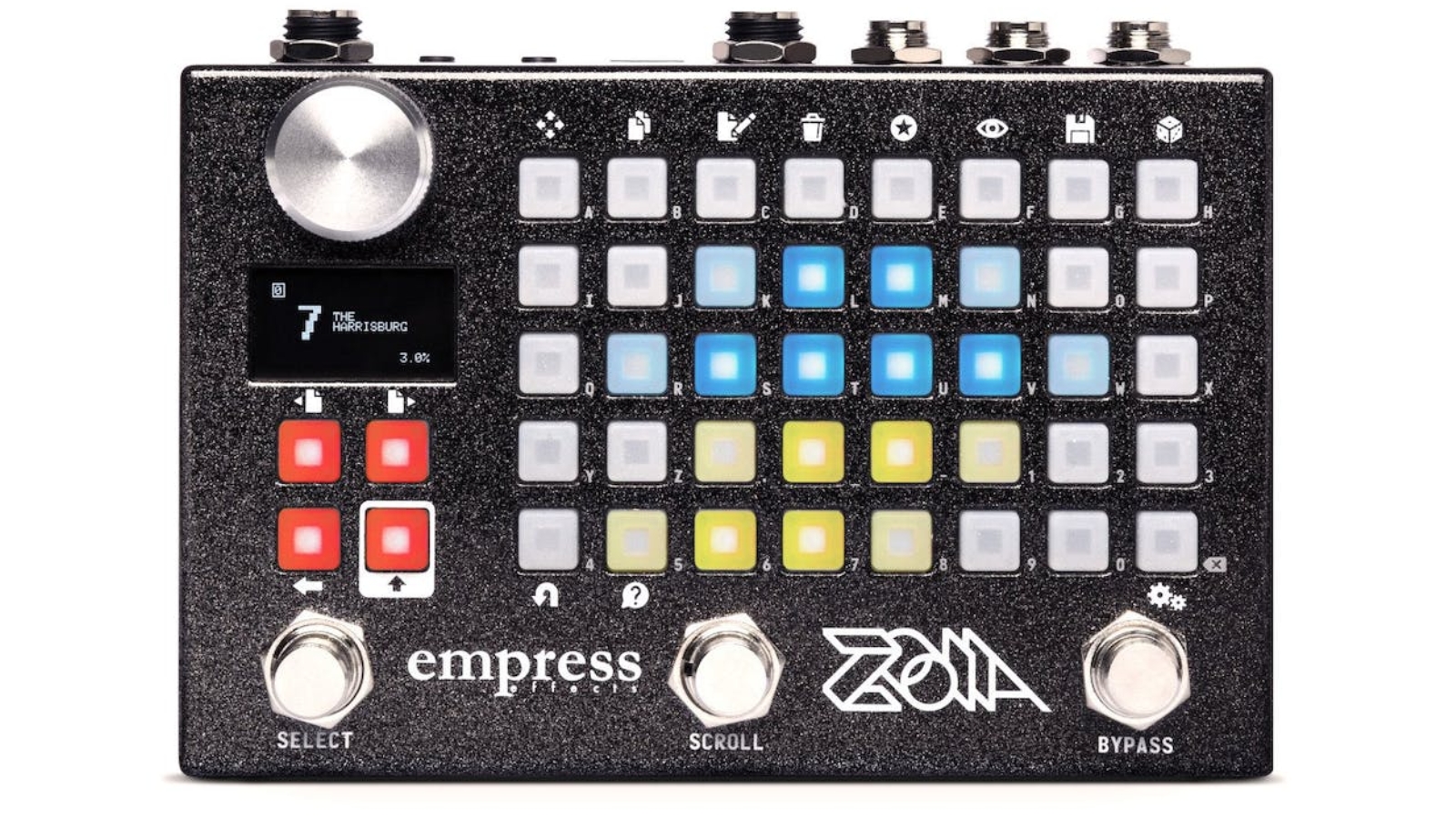
Specifications
Reasons to buy
Reasons to avoid
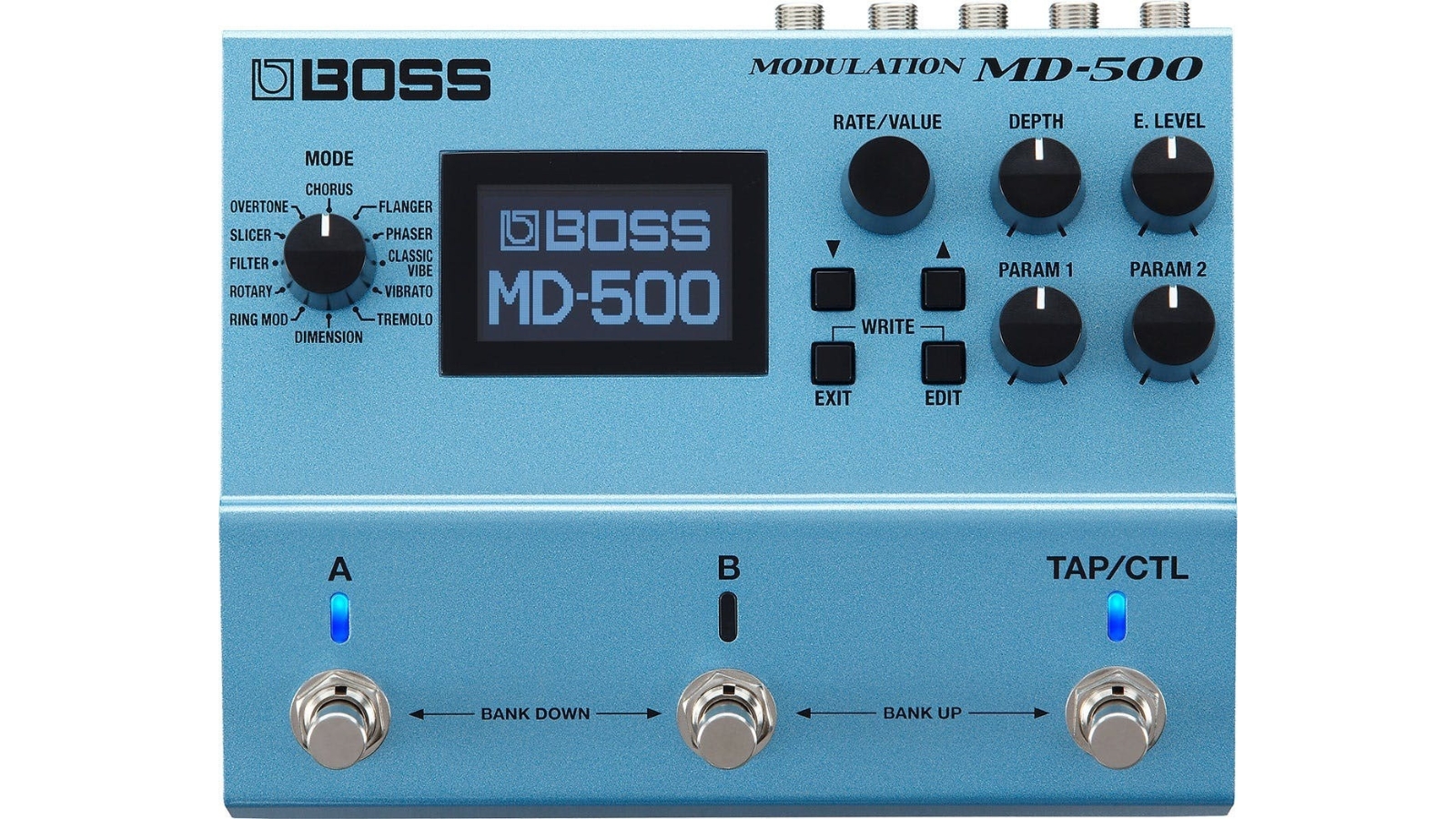
4. Boss MD-500
Our expert review:
Specifications
Reasons to buy
Reasons to avoid
Like a greatest hits collection of all the brilliant Boss mod effects from years gone by, the Boss MD-500 brings together some of the guitar’s most iconic sounds in one handy unit. Best of all, it allows you to run two effects simultaneously, giving it a powerful edge over many of the competing multi-modulation stompboxes out there.
Household names like the CE-1 chorus, Roland dimension chorus, slicer, tremolo pedals, and Vibrato effects are all here with multiple modes. You also get some more esoteric sounds courtesy of some ring mod, detune, and bit-crusher too. In terms of pure numbers, there aren’t many pedals that can compete here, and the quality is insanely good too.
The ability to run two effects simultaneously makes the MD-500 a seriously powerful option, and it offers some great signal routing options too, so you can put your phaser before your overdrive pedals and your chorus afterward if that’s the way you like it. With a whopping 297 memory banks, you’re not likely to run out of storage space either.
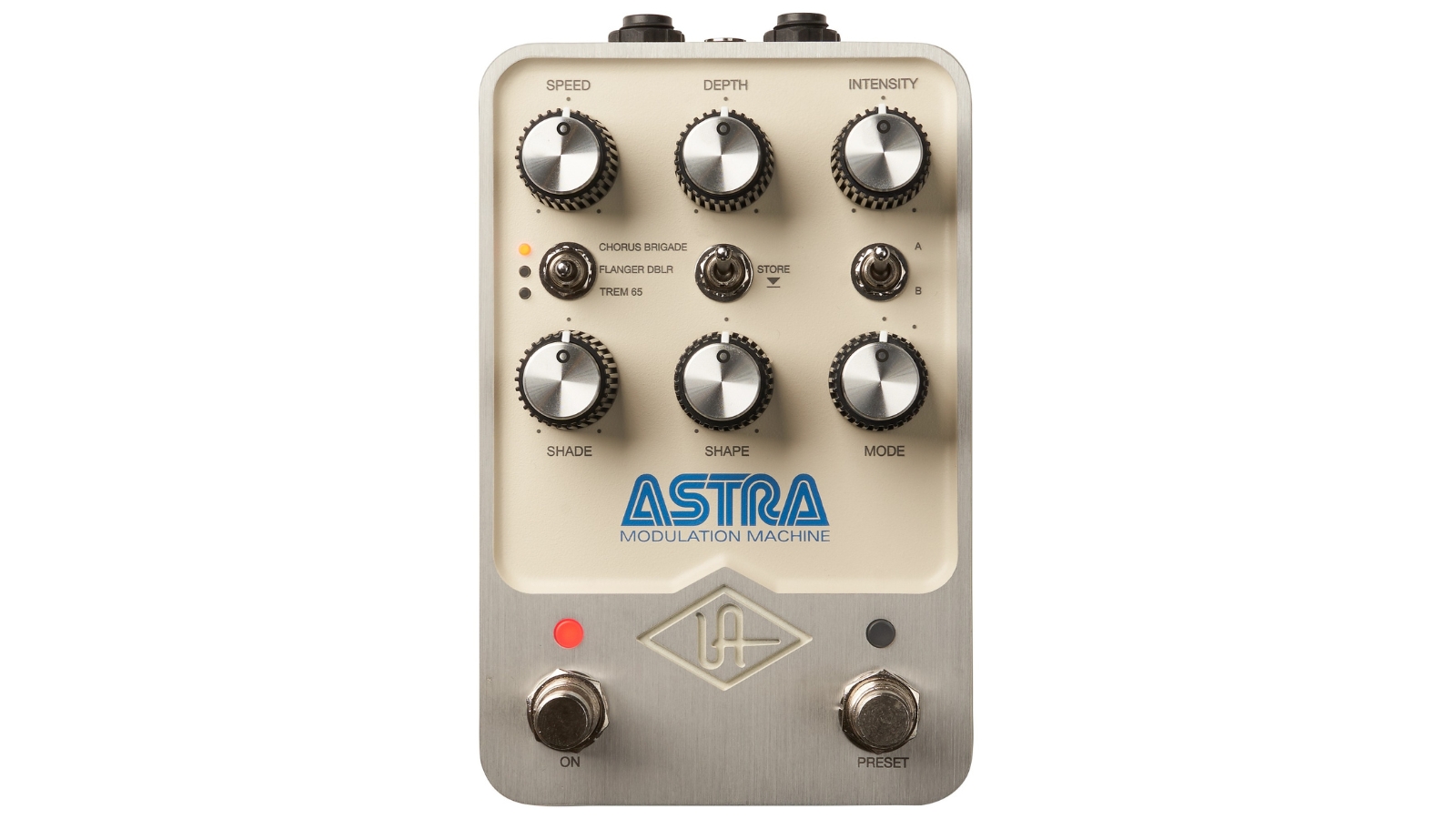
Specifications
Reasons to buy
Reasons to avoid
Not content with dominating the studio hardware and plugin game, UA has taken to inhabiting our pedalboards with their latest line of stompbox-sized effects. The Universal Audio UAFX Astra Modulation Machine gives you three studio-quality effects from the annals of audio and plenty of scope to tweak.
Encapsulating three iconic modulation effects, the Astra gives you a bucket brigade chorus based on the legendary CE-1, a bucket brigade flanger/phaser based on MXR’s iconic rackmount unit, and a vibrato based upon the classic vintage 60s amps of Fender fame. As well as these you also get variations upon each sound, giving you plenty to play with.
The quality of the effects, as you’d expect from UA, is simply stunning and we especially loved the chorus mode which is extremely versatile. There’s a lot to tweak thanks to the additional shade and shape modes which make it easy to mold the sound into your already existing rig.
Read the full Universal Audio UAFX Astra Modulation Machine review
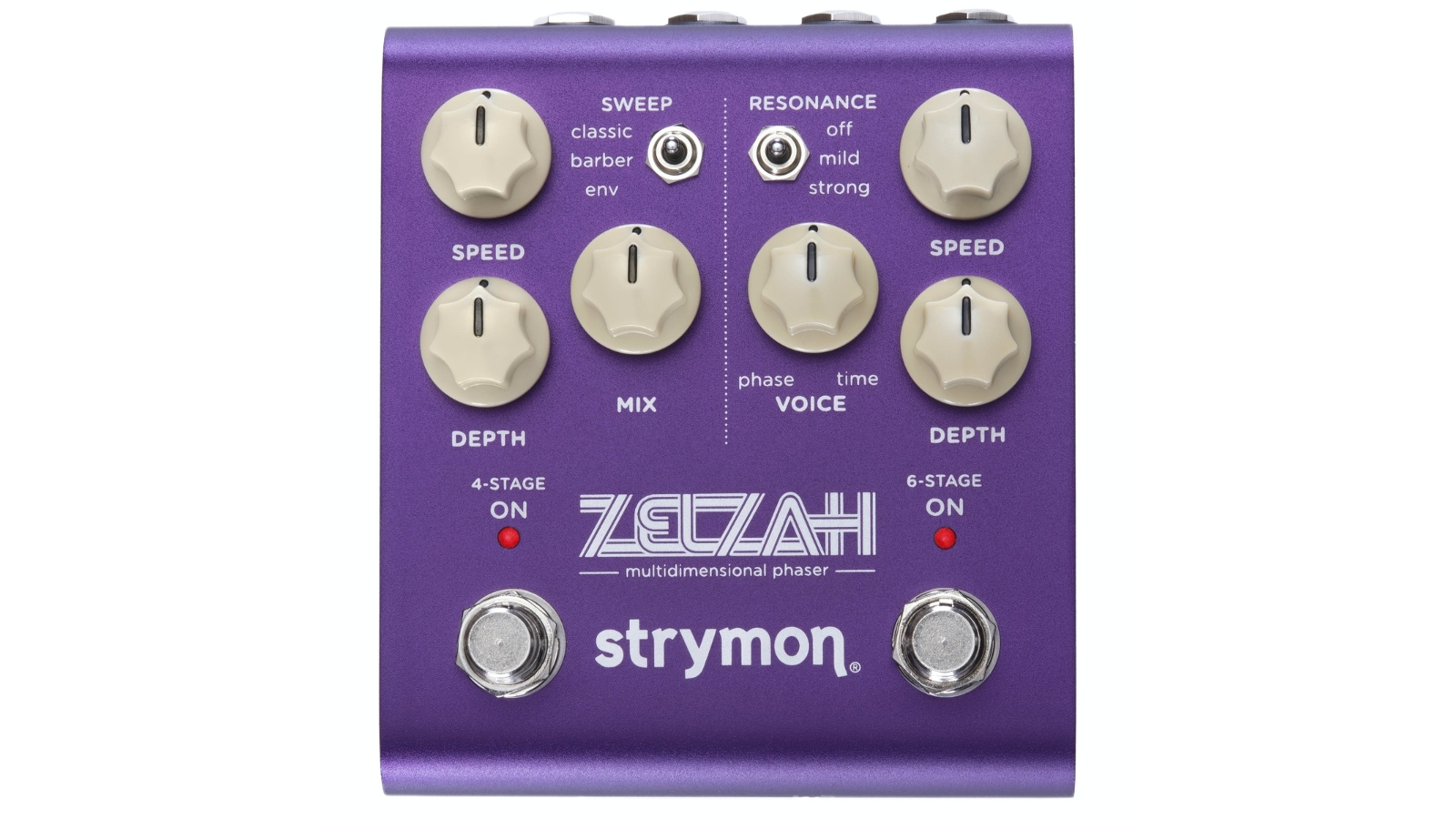
Specifications
Reasons to buy
Reasons to avoid
In a list dominated by multi-modulation effects, it’s a testament to just how brilliant the Strymon Zelzah really is that it makes the cut here. Providing two classic phaser sounds, it also provides a way to create a more modern sound and even move beyond phase itself thanks to its powerful control set.
With one four-stage and one six-stage phaser, you’ve got your core needs covered, and you can run them simultaneously which is a nice option. The speed option is wide enough that you can get a rotary-type effect out of it, and the envelope phaser mod gives you the option to get an effect that reacts to your playing dynamics.
Side two can get you almost into chorus territory with the voice knob, and things get seriously interesting when you use both effects together. You can split them to separate stereo outs or have them in series which offers up some incredible combinations with serious stereo width.
Read the full Strymon Zelzah review
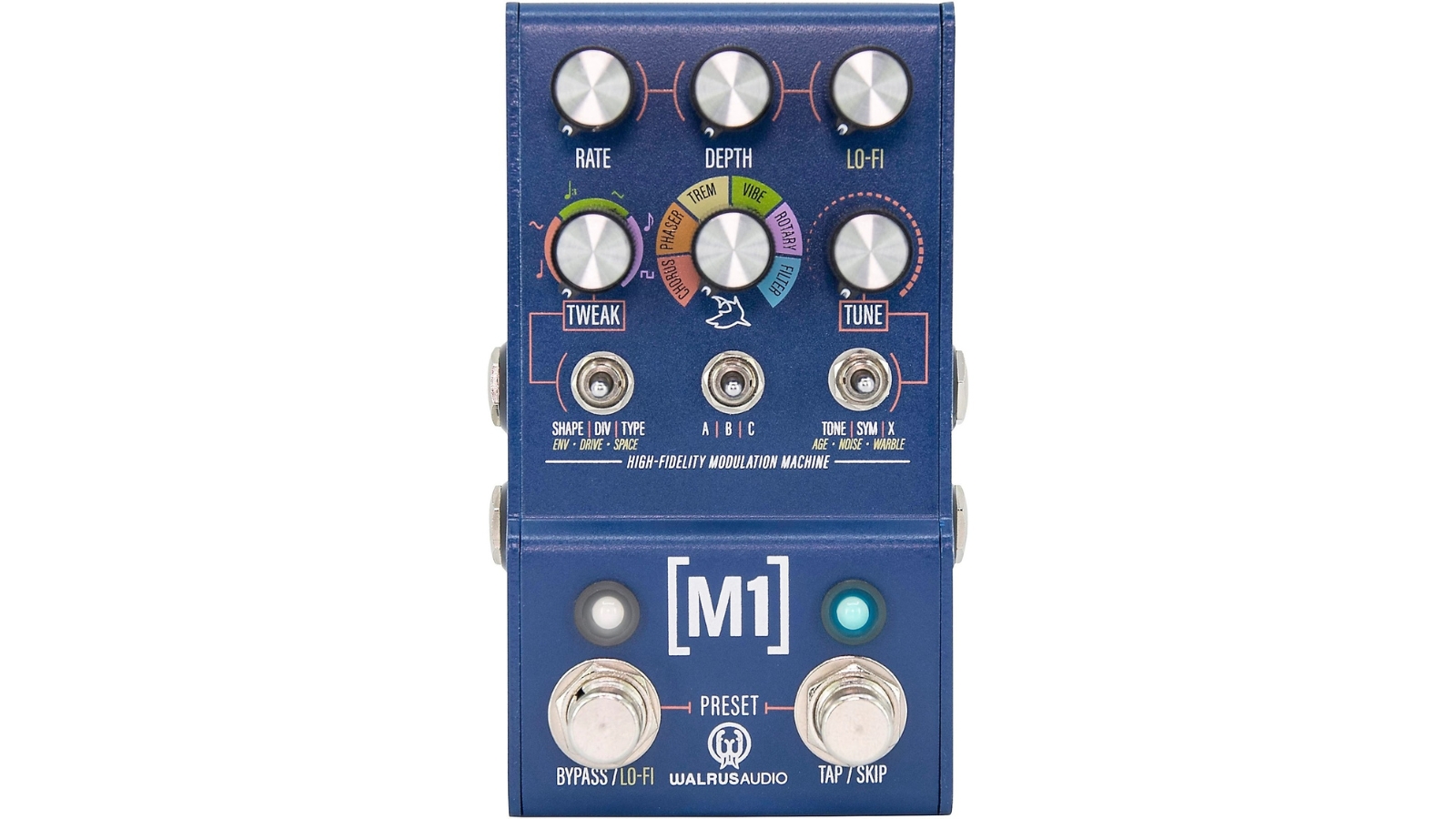
Specifications
Reasons to buy
Reasons to avoid
Despite the compact size of the Walrus Audio Mako M1, there are plenty of effects and loads of options to tweak within its tiny enclosure making it one of the most versatile modulation effects here. The optional lo-fi knob adds bags of character too, helping it stand out from others in the same category.
As well as regular chorus and phaser-type effects, there are some more interesting options like adding a vinyl or tape-style wobble to your vibrato, lopsided sounding tremolos thanks to the ability to adjust the symmetry, and even a skip effect, that gives you the sound of a needle skipping on a vinyl.
You can save presets onboard, accessible via pressing the two footswitches, giving you nine onboard preset options. The fact that the Mako offers your standard modulation fare alongside the lo-fi options makes it stand out in the field. It won’t please everyone, but for those looking for something a little different, it’s a top choice.
Read the full Walrus Audio Mako M1 review
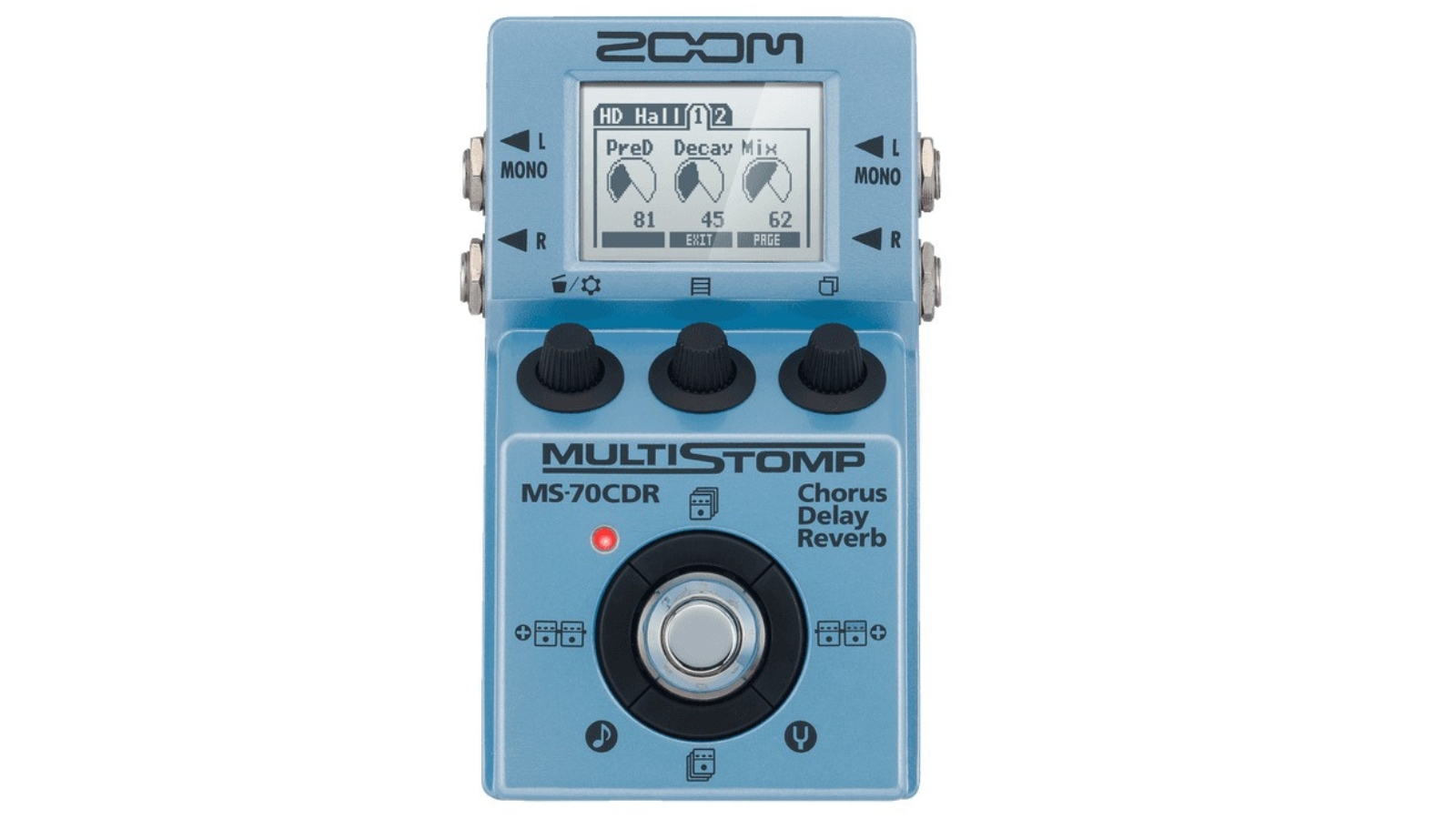
8. Zoom MS-70CDR Multistomp
Our expert review:
Specifications
Reasons to buy
Reasons to avoid
Featuring a lineup of pedal clones that will make any guitarist's mouth water, the Zoom MS-70CDR Multistomp gives you bags of modulation, reverb, and delay effects in one handy unit. With the ability to chain six effects in a row this fantastic multi-effects unit is a great addition to any guitar player’s rig.
There are countless chorus effects on offer here, with everything from the classic CE-1 right through to the Small Clone, flangers, phaser pedals, and more esoteric effects like ring modulation, detune effects, and bit crush all making the cut. Whilst the quality of the analog chorus emulation isn’t quite as on point as some here, the sheer volume of choice more than makes up for it.
Once you’ve chained up to six effects together, you can then save them in a total of 50 banks, allowing for an entire rig's worth of effect patches in one tiny pedal. Considering the cost, you get a truly incredible amount of bang for your buck with this brilliant little pedal.
Best modulation pedals: Buying advice
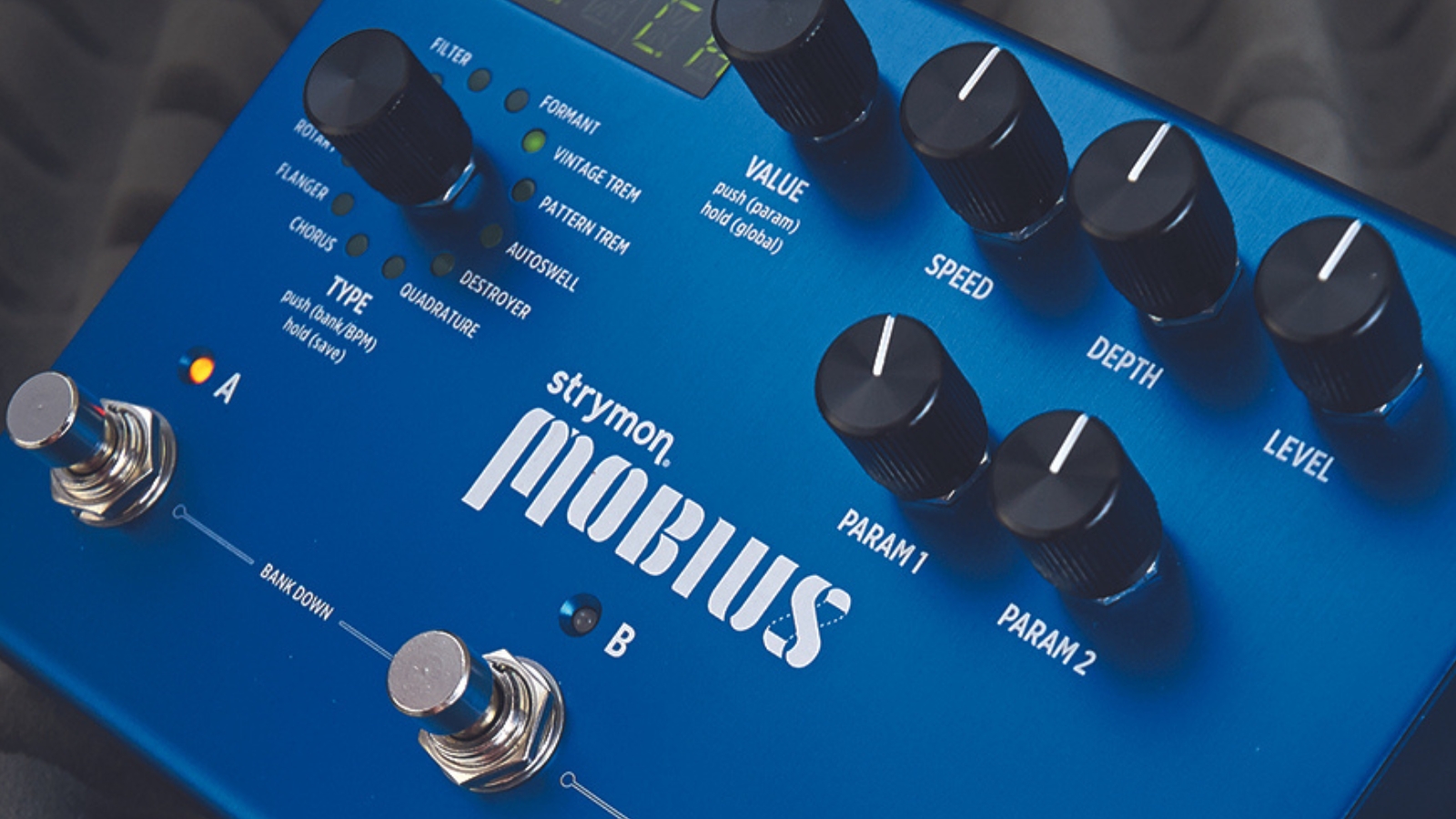
What pedals are considered modulation?
Modulation pedals tend to be ones that change the pitch or volume of your guitar tone. The term modulation means to ‘move’, so any effect that moves your tone in some way is typically considered to be a modulation effect. For this reason, there are a lot of effects that are considered to be modulation, of which we’ve listed the main variants below.
What are the different types of modulation pedal?
Tremolo – the original modulation effect first seen in the DeArmond Tremolo Control in 1946, a tremolo effect moves the volume of your guitar up and down. This can give either a subtle pulsing effect or a harsh chop depending upon the setting and was often built into amplifiers in the 60s.
Rotary speaker – following soon after tremolo, we got the rotary speaker effect, which was originally designed for Hammond organs but was swindled by greedy guitarists. The Leslie speaker, as it’s often known, featured two rotating speakers which create Doppler effect to add movement.
Uni-vibe – made massive by Jimi Hendrix, the Uni-vibe is a unique effect despite often being confused with chorus and vibrato thanks to the original pedal’s labels it’s actually more of a phaser-type effect. It’s quite a hard one to describe, but if we look at the origin, Japanese engineer Fumio Mieda was trying to recreate the sound of radio signals bouncing off the atmosphere, which created a ‘washing’ sound. It’s like a throbbing pulse that’s part tremolo and part phaser, a truly unique guitar effect.
Phaser – one of the most iconic and recognizable modulation effects, the phaser came to fame in the 70s thanks to the MXR Phase 90, the company’s first product. A phaser works by splitting your signal in two and passing part of it through an all-pass filter. As the signal moves through the all-pass filter, it becomes phase shifted before being mixed back into the output signal. This is what gives a phaser that swooshing sound made famous by Eddie Van Halen.
Flanger – often confused with a phaser, the flanger does have a similar timbre to a phaser but they generate their sound in slightly different ways. A flanger pedal also mixes two signals together but one will be slightly delayed, which creates an internal feedback loop. These layers of sound can then be manipulated by control knobs to create a metallic, chorus-type effect with lots of movement.
Chorus – probably the most symbolic of all the modulation effects, chorus is usually what people think of when you talk about modulation pedals. Chorus is a pitch modulation effect that takes your signal, splits it, applies pitch shifting to the second effect, pushing it ever so slightly out of tune, then mixes them back together. It creates a thicker guitar sound that can warble on higher settings.
Vibrato – similar in character to chorus, vibrato does the same pitch-shifting effect except it totally removes the dry signal. Like the incorrectly named tremolo arm of your guitar, or the vibrato technique itself, vibrato gives the sound of pitch moving up and down rapidly or slowly depending on the setting.
Ring modulation – one of the weirder effects you’ll come across, ring modulation takes your signal and multiplies it at certain frequencies, adding a ringing, dissonant, metallic sound to your guitar playing. Ring mod pedals can get pretty strange, but they offer a sound that’s quite unlike anything else out there.
That covers the vast majority of modulation effects but there are many more out there, that often get lumped in with modulation, like filters which are their own category of effect, and bit crush which is actually a form of distortion.
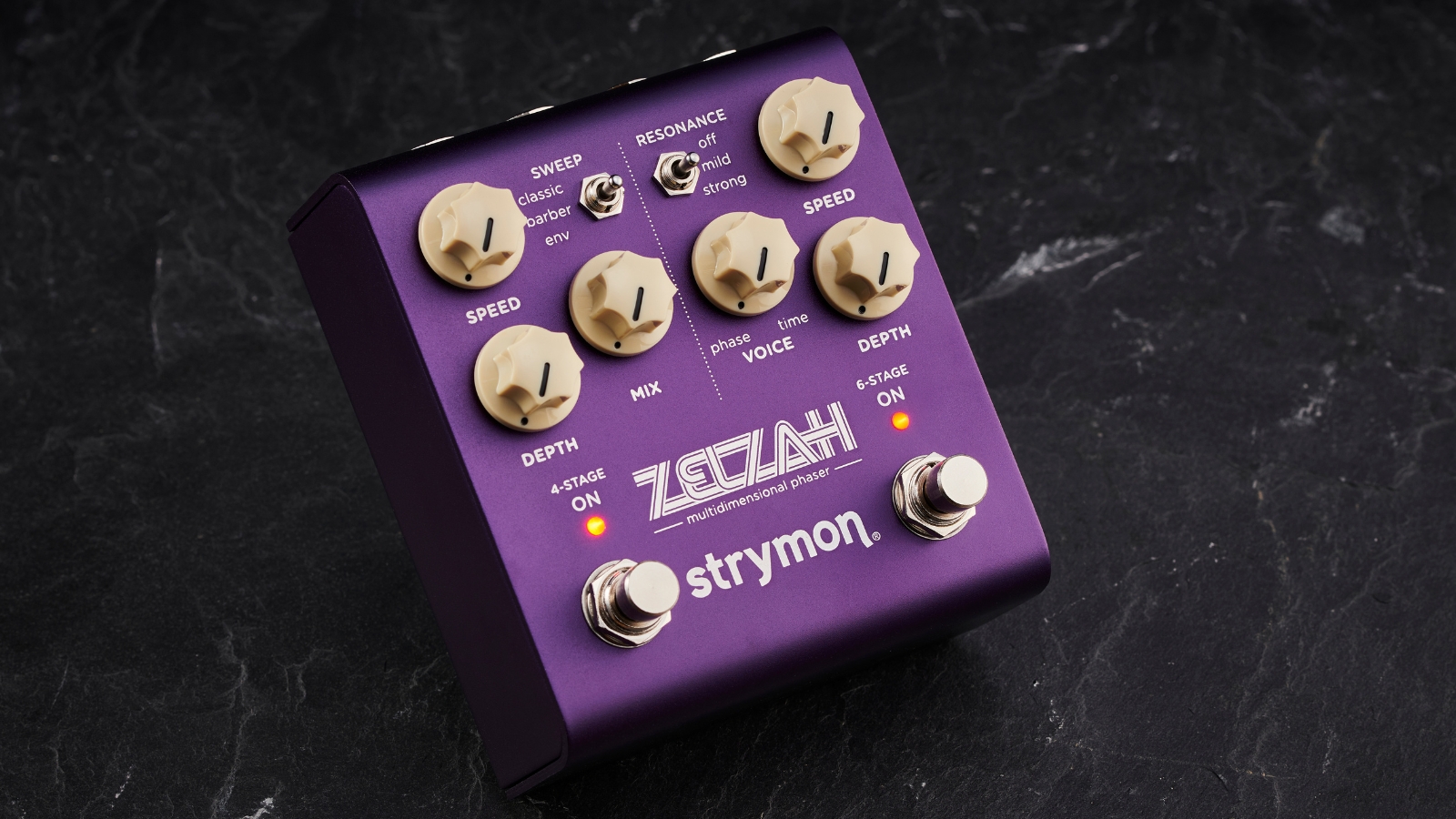
What order should modulation pedals go in?
If we’re looking at it from a traditional point of view, then modulation pedals should go after your drive stage and before your time-based delay and reverb pedals. However, rules are made to be broken, and many guitar players prefer their phasers or tremolos before the drive stage. There’s also an argument for having your tremolo at the end of the chain, as this is where it would be on a classic Fender amp. Like with any pedal order, experimentation here can yield some interesting results, so it’s always worth trying a pedal in a different order to see what sounds you can make!
How we choose the best modulation pedals
You can trust Guitar World
At Guitar World, we have a team of dedicated guitarists who are passionate about the sonic exploration offered by effects pedals. With our love for the diverse palette of sounds that modulation pedals provide, we have tirelessly tested and analyzed numerous pedals to identify the best options available for you.
To compile our list of top modulation pedals, we combined our extensive experience, meticulous research, and spirited discussions with our editorial team. We consider factors such as sound quality, versatility, build quality, user interface, and value for money, ensuring that we showcase the finest pedals on the market.
As dedicated musicians ourselves, we understand the desire to push sonic boundaries and add depth, movement, and character to your guitar tone. Whether you're seeking lush choruses, swirling phasers, mind-bending flangers, or unique and experimental ring modulation effects, our goal is to provide reliable and knowledgeable recommendations to help you discover the perfect modulation pedal that will unlock new dimensions of creativity.
Find out more about how we make our recommendations and how we test each of the products in our buyer's guides.
Related buyer's guides
- Get low with the best baritone guitars
- Play heavy with the best metal amps
- Track fast with the best octave pedals
- Improve your tone with the best combo amps
- Get your stompbox sounding top-notch with the best amps for pedals
Get The Pick Newsletter
All the latest guitar news, interviews, lessons, reviews, deals and more, direct to your inbox!

Matt is a Junior Deals Writer here at Guitar World. He regularly tests and reviews music gear with a focus on guitars, amps, pedals, modelers, and pretty much anything else guitar-related. Matt worked in music retail for 5 years at Dawsons Music and Northwest Guitars and has written for various music sites including MusicRadar, Guitar Player, Guitar.com, Ultimate Guitar, and Thomann’s t.blog. A regularly gigging guitarist with over 20 years of experience playing live and writing and recording in bands, he's performed everything from jazz to djent, gigging all over the country in more dingy venues than you can shake a drop-tuned guitar at.
“The original Jordan Boss Tone was probably used by four out of five garage bands in the late ’60s”: Unpacking the gnarly magic of the Jordan Boss Tone – an actual guitar plug-in that delivers Dan Auerbach-approved fuzz
“This is a powerhouse of a stompbox that manages to keep things simple while offering endless inspiration”: Strymon EC-1 Single Head dTape Echo pedal review










